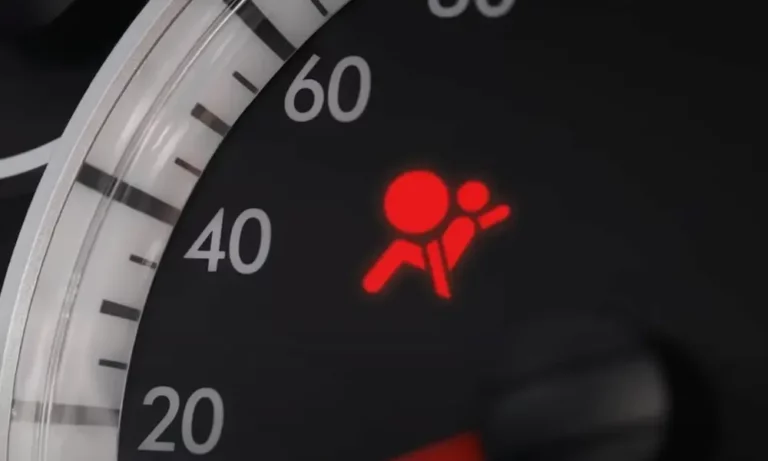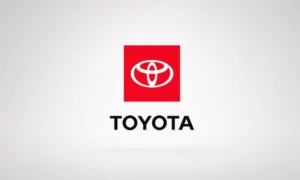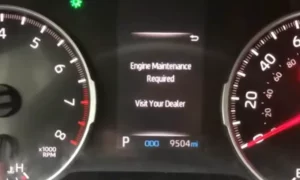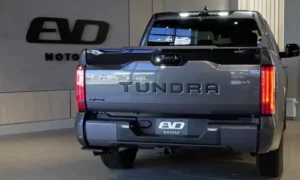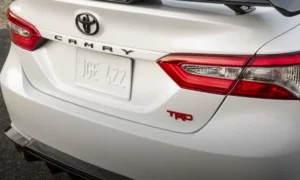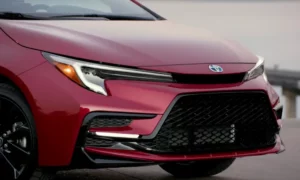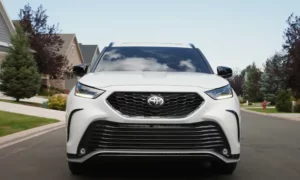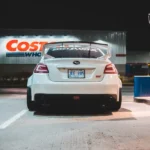That warning light on your dashboard with the little person sitting inside an airbag? It’s not just another annoying alert you can ignore. When your Toyota’s SRS airbag system malfunction light comes on, it’s telling you something important about your safety.
Let’s break down what this means, why it happens, and what you should do about it—without the technical jargon that makes your eyes glaze over.
What Is the Toyota SRS Airbag System?
The Supplemental Restraint System (SRS) in your Toyota is your invisible bodyguard. It’s designed to protect you when things go wrong on the road.
The system includes:
- Airbags (front, side, and curtain)
- Seatbelt pretensioners (they tighten your seatbelt in a crash)
- Crash sensors throughout the vehicle
- The control module (the brain of the operation)
When these components work together properly, they can be lifesavers. But when something goes wrong, that warning light tells you your safety net has a hole in it.
Common Causes of Toyota SRS Airbag Malfunctions
Faulty Occupant Classification System
The most common culprit in newer Toyotas (2020-2022 models) is a broken passenger seat sensor. This Occupant Classification System determines if someone’s sitting in the passenger seat and adjusts airbag deployment accordingly.
When this system fails, your car might think the passenger seat is empty even when someone’s sitting there. Not great if you need that airbag to deploy!
Water Damage and Corrosion
Your Toyota wasn’t built for underwater adventures. Water getting into electrical connectors, especially around the floor or under seats, can cause the SRS system to malfunction.
Signs include:
- SRS light coming on after driving through heavy rain
- Warning appears after a car wash or spilled drinks
- Intermittent warnings that come and go
Previous Accident Damage
If your Toyota has been in a collision (even a minor one), the SRS module might be locked in “crash mode.” This is actually a safety feature—it prevents potentially damaged airbags from deploying incorrectly—but it needs professional resetting.
Worn Steering Wheel Clockspring
The what? The clockspring is a spiral cable that maintains electrical connection to your driver’s airbag while allowing the steering wheel to turn. When it wears out, your SRS system will detect a fault in the driver’s airbag circuit.
How Serious Is an SRS Malfunction?
Very. Let me be clear: driving with an SRS malfunction is like skydiving with a questionable parachute. Studies show vehicles with unresolved airbag faults have a 42% higher fatality rate in frontal collisions.
Here’s what could happen:
- Airbags might not deploy in a crash
- They could deploy with incorrect force
- Seatbelts might not tighten properly during impact
- Side protection might fail when you need it most
Diagnosing the Problem
What the Warning Light Tells You
When your SRS light comes on, it’s storing specific trouble codes in your car’s computer. These codes tell a technician exactly what’s wrong—like “B1650” for a passenger sensor communication error.
The light can behave in different ways:
- Steady illumination typically means an active fault
- Flashing can indicate multiple problems or a critical failure
- Light that comes on briefly during startup then goes off is normal
DIY Pre-Diagnosis Steps
Before heading to a mechanic, try these simple checks:
- Check under the front seats for:
- Disconnected wires
- Visible water damage
- Objects caught under the seat affecting sensors
- Look for signs of water intrusion:
- Damp carpets
- Water stains under dashboard
- Moisture in footwells
- Verify if you’ve had these known triggers:
- Recent battery disconnect/replacement
- Seat removal for cleaning
- Electrical work performed
Toyota SRS System Recall Information
Toyota has issued several major recalls related to SRS systems. The January 2024 recall affected nearly 1 million vehicles—including popular models like the Camry and Highlander—due to cracked circuit boards in the passenger detection system.
Another recall in early 2025 targeted steering wheel spiral cables in 2023 Corolla, Corolla Cross, and Tacoma models, which could disconnect and disable the driver’s airbag.
| Model Year | Models Affected | Recall Issue | Repair Solution |
|---|---|---|---|
| 2020-2022 | Camry, Highlander, RAV4 | OCS circuit board cracks | Replace sensor assembly |
| 2023 | Corolla, Corolla Cross, Tacoma | Steering wheel spiral cable disconnections | Cable reinspection and securing |
If you own one of these vehicles, check if your car is affected by entering your VIN at the NHTSA recall website.
Professional Repair Options
Dealership Repairs
Toyota dealerships have factory-trained technicians with specialized tools to diagnose and fix SRS issues. They’ll:
- Connect Toyota-specific diagnostic equipment
- Read and interpret fault codes
- Replace components with genuine parts
- Reset the system properly after repairs
Expect to pay $100-150 for diagnosis, plus parts and labor for the actual repair.
Independent Toyota Specialists
Many independent shops specialize in Toyota repairs and have invested in the right diagnostic equipment. They typically charge less than dealerships while still providing quality service.
When choosing a shop, ask if they:
- Have Toyota-specific scan tools
- Use OEM or high-quality replacement parts
- Offer guarantees on SRS repairs
Module Reset Services
If your airbag module is locked after a collision, companies like Safety Restore offer reset services for around $60, compared to $500+ for a new module. You’ll need to remove your module and mail it in.
DIY vs. Professional Repairs: What You Should Know
What You Can Safely DIY
Very little, to be honest. The SRS system is complex and mistakes can be dangerous. However, you can:
- Reconnect loose connectors under seats
- Clean visible corrosion on accessible connectors
- Check for water leaks and fix their source
What Requires a Professional
Leave these to the pros:
- Replacing any airbag component
- Resetting the SRS computer
- Diagnosing intermittent problems
- Working with the clockspring
Preventing Future SRS Problems
Keep your Toyota’s safety systems happy with these preventative steps:
- Check the SRS light during startup – It should illuminate briefly then go off
- Keep the undercarriage clean in winter to prevent salt corrosion
- Address water leaks immediately – Even small intrusions can damage electronics
- Register for recall notifications with Toyota and NHTSA
- Avoid placing electronic devices on or under seats that might interfere with sensors
- Don’t use seat covers on seats with side airbags or occupant sensors
Cost Expectations for Toyota SRS Repairs
Repair costs vary widely depending on the exact issue:
| Component | Approximate Cost | Notes |
|---|---|---|
| OCS Sensor Replacement | $400-700 | Free if covered by recall |
| Airbag Module Reset | $60-100 | Third-party services |
| Clockspring Replacement | $300-600 | Includes labor |
| Complete SRS Module Replacement | $500-1,200 | Most expensive option |
Insurance may cover some repairs if they resulted from a covered accident. And if your vehicle is under recall for an SRS issue, the repair should be free at any Toyota dealership.
Real-World Examples: Toyota SRS Issues
Toyota Camry (2020-2022)
Many owners reported the passenger airbag light staying on with someone in the seat. The issue was traced to cracked OCS circuit boards, which Toyota addressed with a major recall in 2024. Owners received new, redesigned sensor assemblies to fix the problem.
Toyota Tacoma (2016-2019)
These trucks often develop SRS warnings due to corroded wiring connectors under the driver and passenger seats. The solution involves cleaning connections and applying dielectric grease to prevent future issues.
Toyota Corolla (2023)
A manufacturing defect in steering wheel assemblies caused intermittent SRS warnings. The spiral cable could disconnect from the driver’s airbag, also affecting the horn. Toyota issued a recall in early 2025 after discovering that a previous repair wasn’t properly completed.
When to Get Professional Help Immediately
Don’t wait to address your SRS light if:
- You’re planning a long trip
- Other warning lights are on simultaneously
- The light started after an accident, even a minor one
- You’re hearing unusual clicking or beeping from the dashboard
- Your airbag light flashes rather than stays solid
Remember: your airbag system is designed to save your life in milliseconds during a crash. It’s one car problem you should never procrastinate fixing.
Your Toyota’s SRS system is too important to ignore when it asks for help. That little warning light might be annoying, but it could be the difference between walking away from an accident or facing serious injury.
Take it seriously, get it checked, and drive safely.

